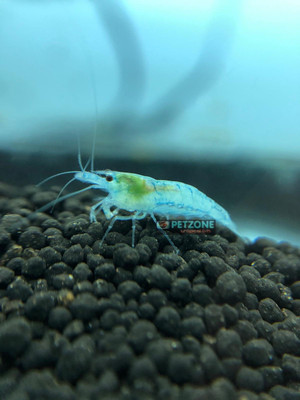Blue Dream Shrimp
Posted by Max Gandara on on 21st Aug 2024
The Blue Dream Shrimp: A Deep Dive into a Stunning Freshwater Marvel
If you’re looking to add a splash of mesmerizing blue to your freshwater aquarium, the Blue Dream Shrimp (Neocaridina davidi) is a spectacular choice. With its striking blue hue and captivating presence, this shrimp has become a popular choice among aquarium enthusiasts. In this blog, we’ll explore the unique features of the Blue Dream Shrimp, provide tips for its care, and offer advice on creating the ideal environment for this aquatic beauty.
The Appeal of the Blue Dream Shrimp
Vibrant Appearance
The Blue Dream Shrimp is renowned for its stunning blue coloration, which can range from a soft, pastel blue to a deeper, more intense shade. This shrimp’s color is the result of selective breeding and careful genetic management, aimed at producing a consistent and vibrant blue hue. The Blue Dream Shrimp's striking appearance makes it a standout feature in any aquarium, adding a cool and calming aesthetic to your aquatic setup.
Origin and Background
The Blue Dream Shrimp is a selectively bred variant of the popular Neocaridina davidi species, commonly known as Cherry Shrimp. Native to Taiwan, the Blue Dream Shrimp has been developed through breeding to enhance its vibrant blue coloration while maintaining its hardy nature. This breeding process has made the Blue Dream Shrimp both a visually stunning and resilient addition to freshwater tanks.
Setting Up the Ideal Habitat
Tank Requirements
To ensure the health and vibrancy of your Blue Dream Shrimp, it’s important to create the right environment. Here’s a guide to setting up a suitable habitat:
- Tank Size: A minimum tank size of 10 gallons is recommended. Larger tanks provide better stability and more space for the shrimp to explore and thrive.
- Water Parameters: Blue Dream Shrimp prefer stable water conditions. Maintain a pH level between 6.5 and 7.5 and keep the temperature between 72-78°F (22-26°C). Soft to moderately hard water is ideal.
- Substrate: A fine gravel or sand substrate works best for Blue Dream Shrimp. A darker substrate can enhance the shrimp’s vibrant blue color by providing a contrasting background.
- Filtration: Choose a gentle filter, such as a sponge filter, to avoid strong currents that could stress the shrimp. A gentle flow helps ensure effective filtration while keeping the water calm.
- Plants and Decorations: Incorporate live plants and decorations to create a natural environment. Plants like Java moss, Anubias, and Cryptocoryne are great options. Driftwood and rocks add hiding spots and enhance the tank’s visual appeal.
Diet and Care
Feeding
Blue Dream Shrimp are omnivores and thrive on a varied diet. Provide high-quality shrimp pellets, algae wafers, and occasional fresh vegetables like blanched spinach or zucchini. They also graze on biofilm and algae present in the tank, which complements their diet. Be careful not to overfeed, as excess food can degrade water quality.
Maintenance
Regular maintenance is crucial for keeping your Blue Dream Shrimp healthy and vibrant. Perform partial water changes weekly to maintain good water quality. Regularly test water parameters to ensure they remain stable. Proper filtration and tank cleaning will help prevent potential issues and keep the environment optimal.
Breeding Blue Dream Shrimp
Breeding Blue Dream Shrimp is relatively straightforward with the right setup:
- Tank Setup: Ensure the tank is well-established with stable water conditions and plenty of hiding spots. This environment supports both adult shrimp and their offspring.
- Eggs and Larvae: Female Blue Dream Shrimp carry eggs under their tails until they hatch. The larvae go through several stages before reaching maturity. A well-maintained tank with ample food and shelter will support successful breeding.
Challenges and Considerations
Compatibility
Blue Dream Shrimp are generally peaceful and can coexist with many tankmates. However, avoid keeping them with aggressive or larger fish that might view them as prey. Small, non-aggressive fish and other peaceful invertebrates make suitable companions.
Health and Disease
Like all aquatic creatures, Blue Dream Shrimp can be susceptible to diseases if water conditions are not ideal. Monitor the shrimp for any signs of stress or illness, such as unusual behavior or discoloration. Maintaining stable water conditions and performing regular tank maintenance will help prevent many common issues.

